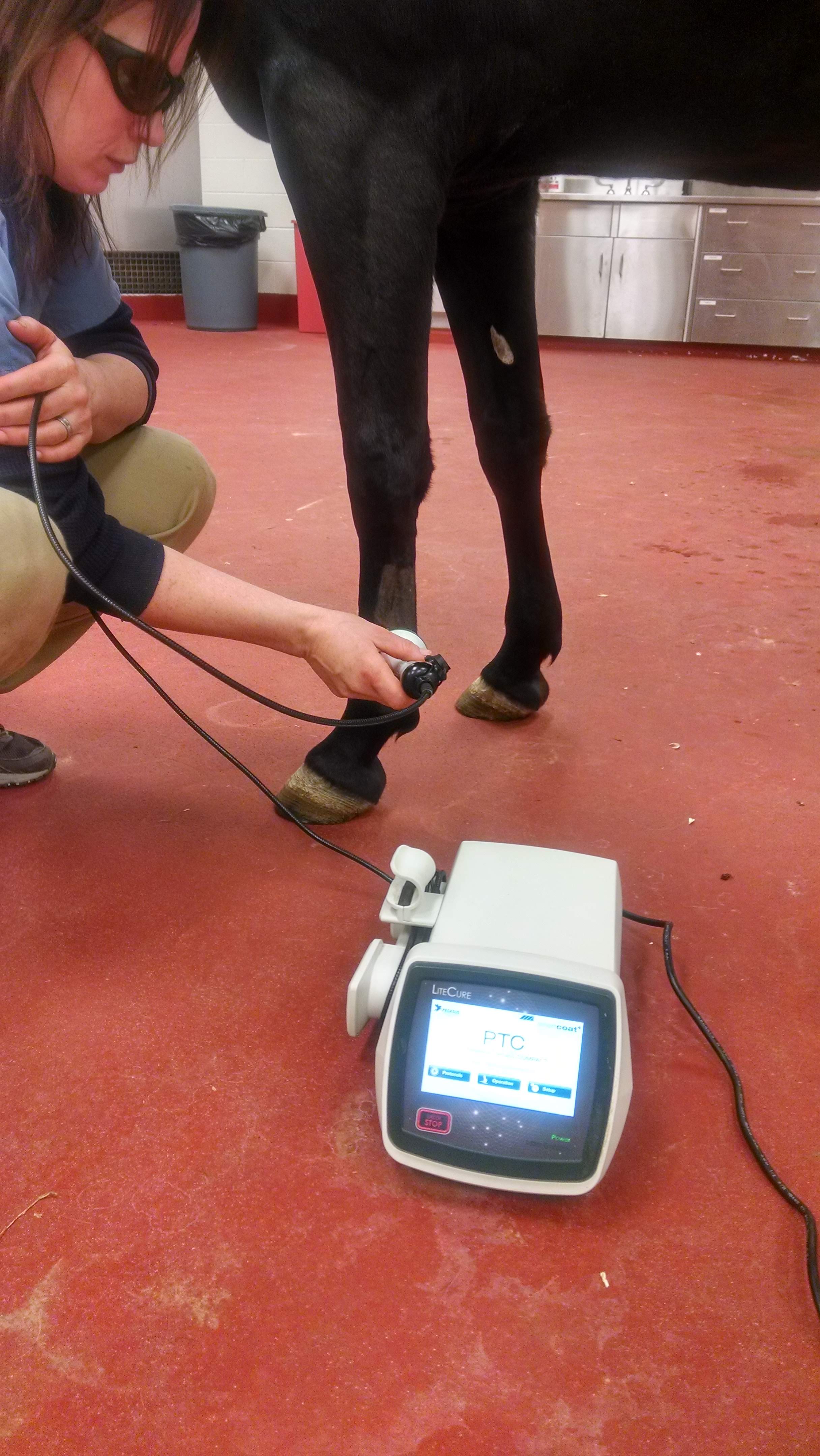Equine Therapy Programs: Changing Lives One Experience at a Time
Equine Therapy Programs: Changing Lives One Experience at a Time
Blog Article
Assessing the Effectiveness of Laser Treatment in Horse Therapy for Injury Rehabilitation
The assessment of laser treatment's performance in equine injury rehabilitation pivots on multiple elements, consisting of recovery time, pain reduction, and cells regeneration. Veterinarians often observe remarkable outcomes with laser treatment compared to traditional methods, placing it as an essential aspect in equine treatment. Equine Therapy.

Recognizing Laser Treatment
Laser treatment has come to be a pivotal device in veterinary medication, specifically in the treatment of equine problems. Understood for its non-invasive nature and effectiveness, laser therapy includes the application of particular wavelengths of light to stimulate cells repair service and reduce inflammation. This restorative technique is increasingly preferred for its capacity to increase the healing procedure in steeds struggling with a selection of bone and joint injuries and chronic problems.
The main mechanism behind laser treatment is its capacity to improve cellular features. When laser light passes through the skin, it is soaked up by mitochondria, the powerhouse of cells, which leads to enhanced production of adenosine triphosphate (ATP) This biochemical energy boost promotes mobile fixing and regeneration. Additionally, laser treatment promotes vasodilation, enhancing blood circulation and oxygen shipment to damaged tissues, thus speeding up healing.
In equine medication, laser therapy is specifically advantageous for conditions such as tendonitis, osteo arthritis, and wound recovery. The method is admired for its pain-relieving residential or commercial properties, permitting horses to gain back flexibility and function extra swiftly. Veterinarians additionally appreciate its minimal negative effects contrasted to various other therapy methods, making it a dependable and risk-free choice for equine treatment.
Just How Laser Therapy Works
To understand exactly how laser therapy works, it is necessary to look into the interaction in between light energy and biological tissues. Laser treatment, also understood as Low-Level Laser Therapy (LLLT) or photobiomodulation, employs details wavelengths of light to penetrate tissues and boost cellular processes. The mechanism depends upon the absorption of photons by cell chromophores, primarily within the mitochondria, which are vital for power manufacturing.
Upon absorption, these photons cause a series of biochemical modifications, enhancing mitochondrial function and bring about increased adenosine triphosphate (ATP) production. This increase in ATP increases mobile metabolism, promoting tissue repair work and regeneration. Furthermore, laser therapy regulates inflammatory reactions by influencing cytokine levels and decreasing oxidative stress, thereby reducing discomfort and swelling.
Another significant facet of laser therapy is its function in boosting microcirculation. The therapy promotes vasodilation, improving blood flow and oxygen delivery to damaged tissues. This facilitates the removal of cellular debris and supports the expansion of fibroblasts and collagen synthesis, critical for injury healing.
Clinical Evidence
The efficacy of laser therapy in equine treatment has been confirmed with various clinical researches, showcasing its restorative potential throughout a variety of problems. Numerous regulated trials and observational researches have actually documented considerable enhancements in cells repair, discomfort decrease, and general rehabilitation timelines. A research conducted by Turner et al. (2012) showed that equines treated with low-level laser treatment (LLLT) for tendon injuries showed accelerated healing contrasted to those getting traditional treatments. The research highlighted a significant reduction in swelling and enhanced collagen formation.
Likewise, study by Johnson and associates (2015) concentrated on equine muscle injuries, revealing that laser treatment significantly quickened muscle mass fiber regrowth and lowered muscle tightness. These searchings for were affirmed by histological evaluations showing enhanced muscle mass cells organization. In addition, professional assessments have actually revealed that laser therapy can ease chronic conditions such as osteoarthritis. A research study by Smith et al. (2018) reported that steeds with osteoarthritic joints experienced noteworthy discomfort alleviation and increased variety of movement following a regimen of laser treatment sessions.
Vet Insights
Veterinary specialists have progressively acknowledged the value of laser look here treatment in equine treatment, pointing out both empirical evidence and direct experience. Dr. Jane Smith, a leading equine veterinarian, keeps in mind that laser therapy has revealed amazing efficacy in minimizing swelling and accelerating cells repair service. "In my practice, I've observed much faster recuperation times in equines treated with laser therapy compared to standard methods," she mentions. This belief is echoed by Dr. John Doe, that emphasizes that laser therapy supplies a non-invasive alternative with very little adverse effects, making it specifically suited for equine people.
Vets additionally value the versatility of laser therapy. She points out that laser therapy can be tailored to the particular needs of each horse, guaranteeing optimal results.

Practical Factors To Consider
A vital element of implementing laser treatment in equine treatment involves recognizing the useful considerations that guarantee its efficacy and safety and security. Primarily, it is important to select the proper laser device, as numerous types vary in wavelength, power, and penetration deepness. Veterinarians need to be well-versed in these criteria to tailor therapy protocols properly to every injury kind
Furthermore, the regularity and period of laser therapy sessions require careful preparation to maximize healing benefits while lessening any prospective adverse impacts. Regular monitoring of the steed's reaction to therapy can guide needed changes in the therapy program. Developing a safe and regulated environment throughout therapies is likewise important to avoid unintended browse around this site exposure to laser discharges, which can hurt both the equine and the trainer.
Training and accreditation of employees administering laser therapy are vital to make certain proper method and to copyright security criteria. In addition, maintaining precise records of each session, including laser setups and observed end results, is vital for examining the total performance of the therapy and for making data-driven decisions.
Final Thought
Laser treatment has arised as an efficient modality in equine injury recovery, using considerable benefits in recuperation time, pain relief, and cells healing. For optimum results, continuous surveillance and personalized treatment methods stay essential in leveraging the complete potential of laser treatment in equine care.
Report this page